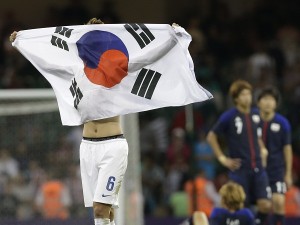BREATHLESS publicity, whether on television, radio or in the written press, will continue to play an essential role in sports. The sports community as a whole depends on it as does the survival of the Olympic Movement.
The $456 million American network NBC has paid to acquire the television rights for the Olympic Games is tangible proof of this.
In an independent survey conducted by the Sports Message of the IOC to monitor attitudes towards Olympic sponsorship, 86 percent of respondents said that the Olympic Games “would not be viable” without sponsorship, while 82 percent said they favored the Games being sponsored. On a more general basis, 86 percent felt that the Olympics stand for the highest levels of achievement, 83 percent felt the Olympics provide a good model for youngsters, 83 percent said that it is the top sporting event, and 84% said that the Olympics is a symbol of international cooperation.
Sponsorship in all forms gained such major importance that one can only agree with those who call it the primary source of income for sport. The amounts received by top-level athletes in such diverse sports as tennis, car racing, ice hockey, basketball or football—and the list goes on—exceeded the income of the wealthiest businessmen. The founders of Nike, Americans Philip Knight and Bill Bowermann, who created the sports shoes of the same name, were among the first of their kind to launch a movement that supported specific champions. The heads of other firms did the same, making considerable investments in this highly profitable business in proportion to the popularity of the sports concerned.
Even though the IOC does not allow advertising billboards in the fields of play, sport and publicity have always maintained a fruitful synergy. For example, cycling already constituted a major source of publicity for bicycle manufacturers. At the time, it had become a popular sport owing to the arrival of new techniques developed during the industrial revolution. Little by little, tires replaced wooden wheels, thanks to the imagination of John Boyd Dunlop, the inventor of the pneumatic rubber surrounds for vehicle wheels in 1888, and that of Edouard Michelin, creator of the first removable bicycle tire in 1891.
The effect of publicity, created by the success of the Tour de France, held for the first time in 1903, has a decisive influence on this development.
Sports is an extraordinary vehicle for the promotion of ideas, products and myths, and of social and sometimes also political promotion. It offers frequently unused possibilities for cooperation between the International Olympic Committee, the International Federations, the National Olympic Committees, international organizations such as WHO and UNESCO, and the sporting goods industry.
The reality facing the IOC in the seventies was simply that it must sink or swim. The Games were becoming even more expensive to stage and there was not enough income to pay for them. Montreal in 1976 was a financial catastrophe which the good citizens of that city have had to pay for ever since; Moscow managed thanks to massive state support, and by 1984, only Los Angeles was brave enough to accept what was increasingly a poisoned chalice.
Fees for TV rights were first negotiated as far back as the London Games in 1948. But, it was not until the Games became truly global in Tokyo 1964, with the first satellite link-up, that TV rights contracts evolved into an important revenue source for the IOC and provided a mechanism to expand Olympic involvement. IOC policy, as staged in the Olympic Charter, awards the Games broadcast rights to those broadcasters who offer the greatest audience, free of charge, rather than the largest check.


